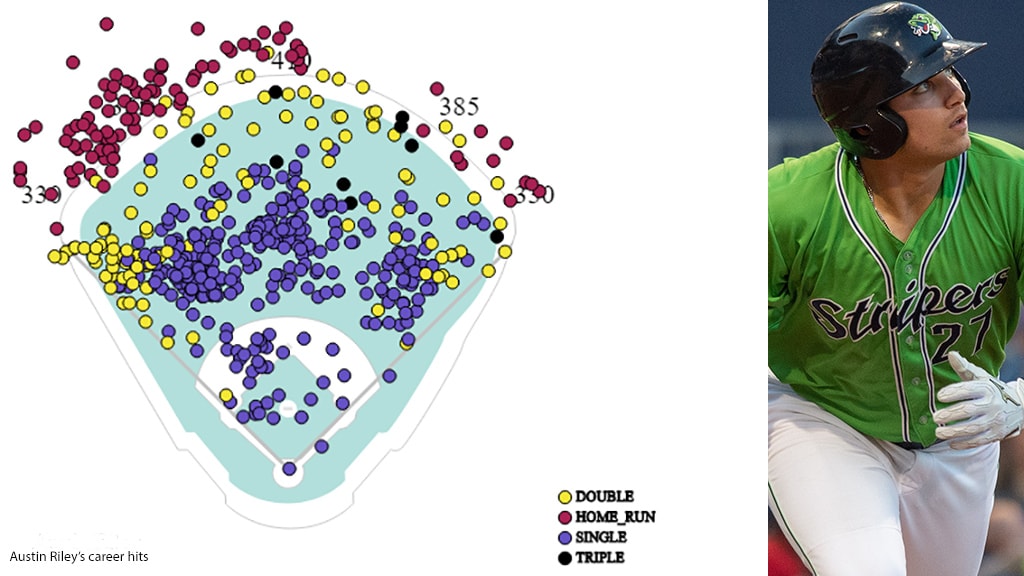With Ender Inciarte placed on the injured list, the door has opened for Austin Riley to show what he can do for the first time in the big leagues. He’d been beating down that door with his bat, especially of late, and was officially promoted Wednesday ahead of the Braves game against the Cardinals in Atlanta tonight.
There have been few, if any, prospects hotter than Riley has been over the last few weeks. The No. 34 overall prospect is now tied with the Astros’ Yordan Alvarez for the most home runs (15) of any Top 100 prospect. Over the last 30 days, he’s second (only to Alvarez) in OPS among his Top 100 brethren, and he’s hit 10 homers over 13 games in May, with a .360/.458/1.020 line this month. A grand slam on Tuesday was an exclamation point for Riley as he’s getting the call at perhaps the right time having already tied the Triple-A Gwinnett record for homers in one month.
What can Braves fans expect from the 22-year-old currently ranked No. 4 on the Braves’ Top 30? Let’s break him down.
Hit: While everyone talks about Riley’s power, his ability to hit has long been underappreciated. He is far from an all-or-nothing slugger, and he’s shown an aptitude to hit for average and make adjustments. This is a guy who brings a career .284 average and .350 on-base percentage to the big leagues with him. At the start of his career, he was a notorious slow starter, who then adjusted and put up gaudy numbers in the second half, often while getting used to a new level. He’s evened that out the last couple of seasons, and while he’s been scorching of late, he still had an .830 OPS in a “cold” April. Yes, there will be swing-and-miss issues, but it should be noted that he cut his strikeout rate this year to 19.1 percent while upping his walk rate to 11.1 percent.
Power: Riley has about as much raw pop as any prospect in the game. With a career .505 slugging percentage, he’s already shown the ability to tap into it, but he’s taken it to another level this year (.661 SLG). Much of that can be tied to the work he’s done with hitting instructor Mike Brumley that has led to more consistent contact. He’s never been one to chase, but he did have a penchant for swinging through strikes. That’s happened less this year, and the results are evident. As long as he continues to stay within himself -- he will never have to be one to sell out for power because of his strength and bat speed -- the home runs are going to come.

Run: Early in his career, Riley bought into the idea of hard-core conditioning to re-make his body. As a result, he’s much more athletic than people tend to give him credit for. His is a rare case where he’s actually become a better runner as he’s matured, largely because of how well he’s taken care of his body. Now, that doesn’t mean he’s going to start stealing bases or challenge Ronald Acuna Jr. to a race -- he’s still a below-average runner -- but he is pretty good underway, so don’t be shocked to see him go first-to-third at a faster clip than anticipated.
Arm: In high school, Riley was up to 94 mph from the mound, and some teams preferred him as a pitcher. That arm strength has translated very well at third base and should be a weapon for him in left field, though he’s yet to be tested there.
Field: Riley’s commitment to conditioning has allowed him to play solid defense at the hot corner on his way up the ladder, with talk about him having to move to first base no longer audible. It’s also made the idea of trying him in left field a plausible one. It’s a bit premature to draw conclusions one way or the other since he played just five games there in Triple-A before the callup, but reports were that he looked at least adequate out there. Having Acuna Jr. next to him in center certainly won’t hurt.
